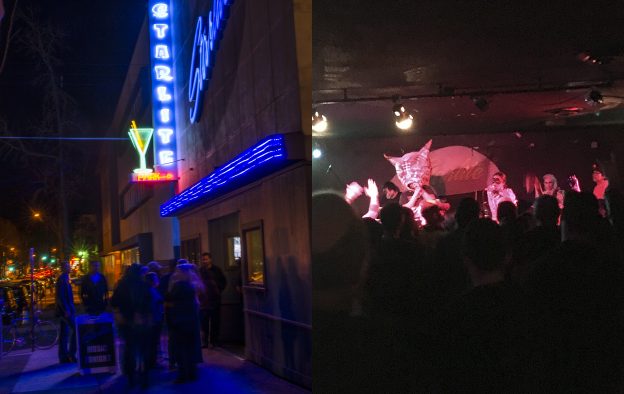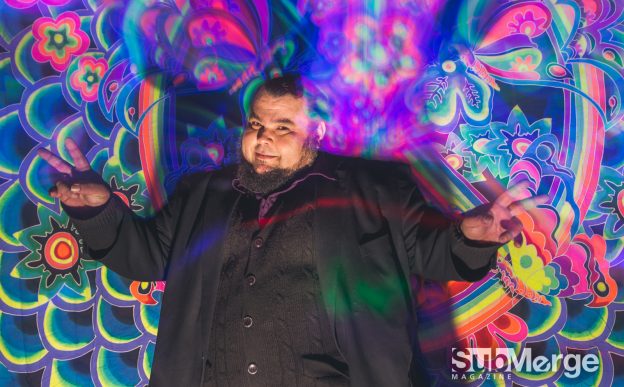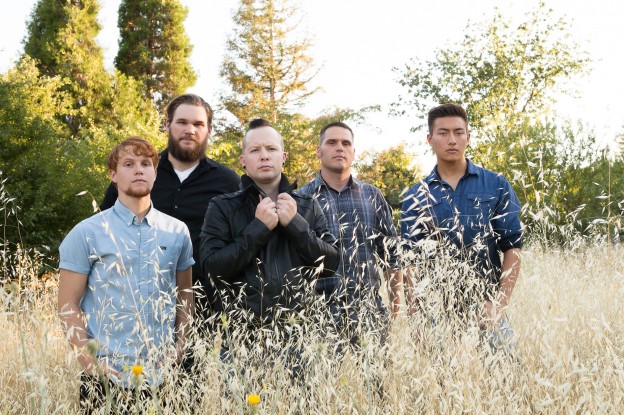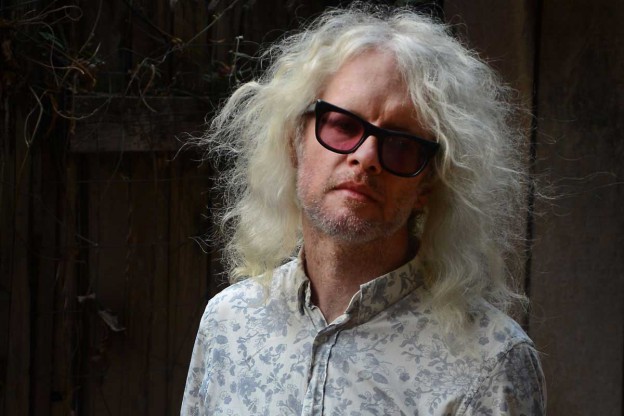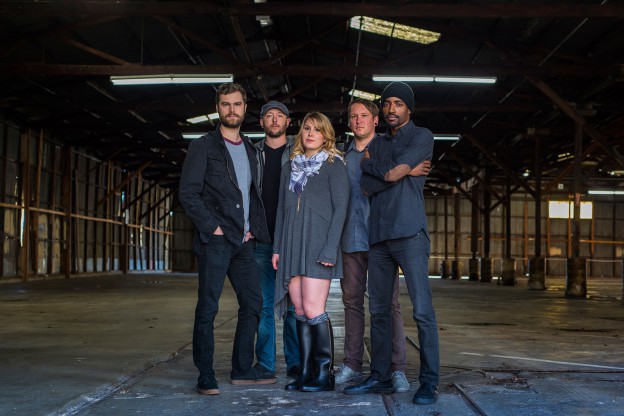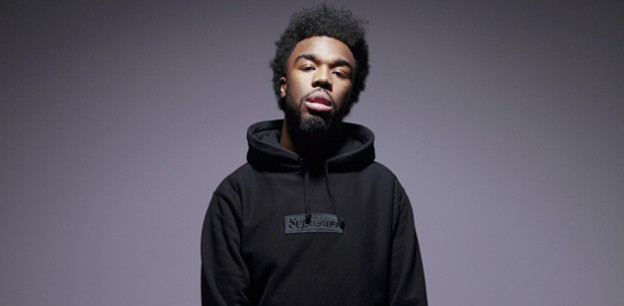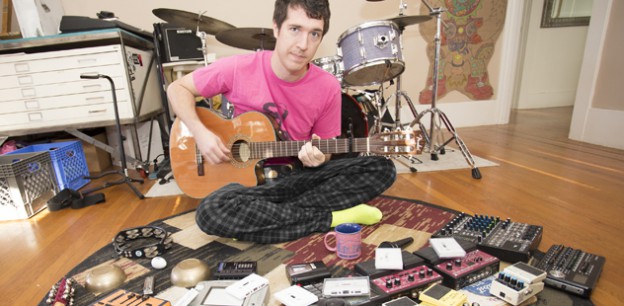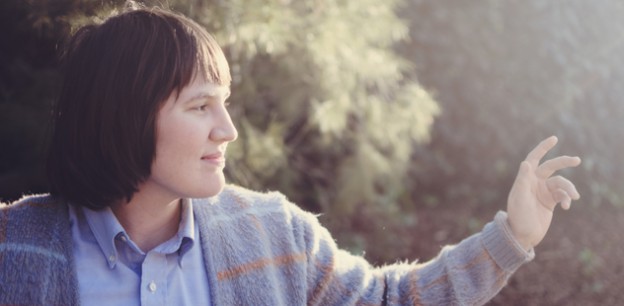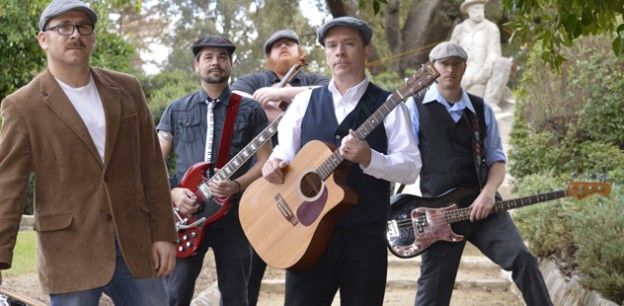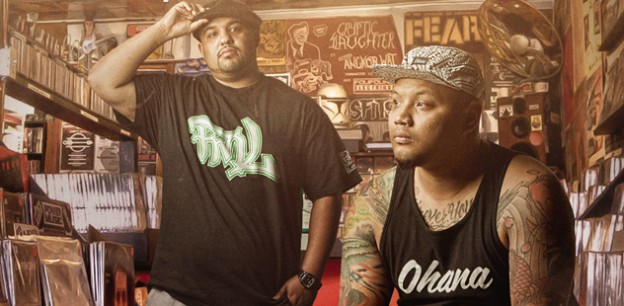Two of Sacramento’s most prolific live music venues dropped off the scene in the span of just a couple of days last month, fanning the flames on the unending conversation surrounding the health of the city’s live music scene.
This time it was the Lounges: Naked Lounge announced that they would no longer feature live music and Starlite Lounge announced that they would shut down entirely. A similar blow hit Sacramento about three years ago, when Luigi’s Fun Garden, Assembly Music Hall, Marilyn’s on K and Witch Room all shut down within a year of each other. Predictably, a wave of concern, tempered by a healthy dose of optimism, rippled across the various scenes, just as it did after the latest venue closures.
“It pains us to close the doors on what we all feel is such an important aspect of the community and the local scene, but when push comes to shove, we are out of options,” said Starlite Lounge via Facebook on the evening of June 20. “Sacramento is a tough market, and it’s a constant uphill battle to run a venue of our size that focuses almost exclusively on live music and touring bands. We truly appreciate your loyalty throughout these years as patrons, music fans, friends and family.”
In the years after The Townhouse changed ownership and became Starlite Lounge, the space became a haven for Sacramento’s heaviest music, largely on the back of Chris Lemos, who booked shows and ran sound in addition to playing in local doom/psych rock band, CHRCH. His name can be found littered across the Facebook eulogies for Starlite after the closure was announced.
But as much as Starlite became a hub for the metal scene, their offerings wandered far beyond the subgenres of that niche. While their closing night appropriately featured a metal show, the two events prior to that featured a band who performed at Woodstock and the Second Annual Booty Worship, which hosted burlesque and pole performances as well as spoken word and live music.
Naked Lounge offered something different, but equally important to a city’s live-music DNA: you could book a show there with unparalleled ease. The venue featured all-ages live music four nights a week in perpetuity. Musicians had to bring their own crowd (even more so than other local venues), but it didn’t take many people to make that room come alive.
As social feeds lit up with responses to the venue closures, we reached out to some local musicians for their take on the situation. Sprinkled between those responses are excerpts from other locals on social media.
April Walker (SpaceWalker): “I was honored to have been on [one of the last shows] at Starlite and the last show at Naked Lounge on June 30. This is a wakeup call for all components of our scene and a call to action for the venues, promoters and artists to find other ways to get people in the building besides relying solely on the performers, who already have a responsibility to keep people in the building with their art. An easy way to kill the scene is to take it for granted. Ever since I’ve moved here from a small town, I’ve been excited about all of the art and music that surrounds us, but for the same amount of time have heard Sac natives complain there’s ‘nothing to do.’ If we don’t seek it out and support the events going on, that will eventually be true.”
Danny Secretion (The Moans): “I don’t feel it says something about our local music community as much as is it does the changing economic landscape of Downtown and Midtown Sacramento. The music scene will continue to thrive, whether it’s in Downtown and Midtown or in Oak Park, West Sac or the suburbs. The musicians and music fans in this city are much too resilient to pack it up. Both [venues] served very important facets of our local music scene. Starlite was a home to many of the heavier acts in town. Naked Lounge was a home to many of the singer-songwriter types. As much as it hurt those facets with the closing of these venues, it points to how vital it is that the harder acts continue to support places like On the Y and the singer-songwriters continue to support places like Luna’s.”
Autumn Sky Hall (Write or Die): “We have emotional bonds to these places, like old friends. Naked Lounge was an amazing platform for musicians just beginning to play in the area. Venues have been coming and going since people began to play music in Sacramento and they certainly won’t fizzle out just because something dear to them was lost. We’re all far too stubborn. Every few years or so it feels like the scene has to more or less reinvent their wheel, but I think that’s good. It forces us to think of the future from fresh perspectives. I’m eager to see what the next chapter will be, and ready to work alongside the community to get there.”
Chris Lemos [via Facebook]: “I’m not going anywhere but GOD DAMMIT Starlite was home. Literally. I spent more time there than I did actually at home most of the time. There are wheels in motion and I can only hope that what the future holds feels as good and does as much as that room did for me and the staff, and so many others. Together we mourn, but together we can also make it out of the wreckage. RIP Starlite.”
Vinnie Guidera [via Facebook]: “I’ve played at Naked Lounge 27 times. They trusted me when I had weird ideas that were too big for a coffee shop and helped me make it work. They reached out and booked me when I had no drive and had all but given up on playing music. That stage was home base for a lot of years, and I’ll always appreciate the comfort that I felt there. Starlite was THE place to play loud and hard. Chris Lemos filled a huge gap in the artistic mosaic of this town by giving heavy music a home. Not only could you find some insane acts from across the world playing there, but you’d usually find locals on the same bill. We may have only played there three or four times, but those were three or four of my favorite shows. Go out to stuff. Support local art. ACTIVELY ENGAGE with your creative community. Take a chance and spend $5 to see a band you’ve never heard. Spotify doesn’t feed artists or keep venues open. PS: If you are an artist and you don’t go to shows other than your own, you aren’t pulling your weight.”
Chrome Ghost [via Facebook]: “We all loved the Starlite Lounge, and will miss it dearly. Chris Lemos was always a major supporter of this band, and we look forward to working with him for the rest of time. We played one of our most unique shows at the Naked Lounge, alongside our idols Odamé Sucks. Both of these venues offered something important to the community, and will be missed.”
Kenny Beasley [via Facebook]: “The Sacto scene is more vibrant now than ever. Trust me, I don’t think there’s been a six month stretch that I haven’t played a show in Sactown since 1987 or longer. And I can tell you that there are more cool spots to rock than ever. We got the Above and Underground crackin’ these days. How many rad spots have come and gone? It’s just a part of it. You got this kids!!!”
Brendan Stone [via Facebook]: “I can’t stress enough how important it is that we not only verbally support the businesses we appreciate and want to stick around, but actually come out to their events and promote them vocally with others.”
Ean Clevenger [via Facebook]: “Today we are feeling a huge blow to the scene … I hope the city rallies and really comes up to support the underground shows. This business is fragile, especially for people supporting real bands and artists. It’s no joke, it takes a village.”
Evan Thompson [via Facebook]: “This one really hurts. Every show I had the privilege of playing at Starlite, regardless of turnout, was an absolute blast. So many heavy hitters have played that stage thanks to the hard work and dedication of Chris Lemos and the rest of staff.”
Susan Rose [via Facebook]: “Well, fuck. Starlite Lounge and Chris Lemos pretty much brought the heavy music scene to life in Sacramento over the last few years. I’ve been honored to play so many shows with fucking amazing bands that, frankly, we wouldn’t have had the chance to open for otherwise. Thank you for staying around as long as you have, and I hope everyone working there lands on their feet. What a bummer.”
**This piece first appeared in print on page 8 of issue #243 (July 3 – 17, 2017)**
For someone with even a passive love for music, Larry Rodriguez (aka DJ Larry or The Flower Vato) can be a pretty intimidating figure. Not only has he been making Sacramentans sweat for 20 years with his wildly popular Dance Party at the Press Club on Sundays (affectionately called “Church” by people in the know), but he’s provided the soundtrack to what most of us have been doing for the past two decades with his insane record library and encyclopedic music vocabulary. Every time he’s in control of the decks, I go home with a list of music to look up.
Maybe the most impressive part is that he’s been at it for most of his life, like the cool kid in John Hughes movies. “I was that dude in high school who was always concealing a boombox in his book bag in case there were any breakdance battles at lunch,” Rodriguez says.
As a 16-year-old, he landed a show he called Soul Sauce on a community radio station, where he played records people twice his age didn’t know anything about—jazz, funk, latin grooves, reggae and international jams from Africa and Brazil.
He gained notoriety and rose through the ranks, DJing at Jerry Perry’s legendary clubs Vortex and Cattle Club, but it wasn’t until he saved the night at a real dance party that Dance Party started to take form.
“On New Year’s Eve of 1996, I was chilling in my attic, having a puff and listening to some sides when [my brother] Mike calls from a party that some kids from The Loft were having,” Rodriguez recalls. “He told me to bring my funk and soul records because they were dancing to Billy Idol and Duran Duran singles. So I show up, throw on In the Jungle Groove by James Brown, and the joint was jumping. The rest of the night was great even with just one turntable and a rickety stereo unit. Afterward, Marla Kanelos who booked Old Ironsides asked if I wanted to do a weekly dance starting the following Sunday. That’s when Dance Party was born.”
He’s been stoking Sacramento’s flame ever since. DJing at KDVS, hosting dance nights and even doing wedding gigs.
“I’ve done cowboy weddings where all they want to hear is country music and hip-hop,” he says. “I get a perverse kick knowing what we’ve always known as rednecks are actually opening up to black culture more than we know. I was playing ‘Boot Scootin’ Boogie’ back to back with ‘Whip the Nae Nae.’”
Every time I run into Rodriguez, I walked away marveling at how deep his love for music runs. I caught up with him after a long day of making people move. His enthusiasm is so contagious that it’s hard not to catch on.
First things first: if everyone reading this was with us in your living room, what record would you put on?
I have a stack cued up by the record player right now. Looks like the first few records we’d be listening to are Bent City by Phil Yost, Plastic Ono Band by Yoko Ono, America Eats Its Young by Funkadelic and Modern Journal of Popular Savagery by Porest.
With that out of the way, tell me a bit about who you are, how you started out and ended up here?
Though I was involved in hip-hop culture as a teen, I would also listen to KDVS where I’ve irregularly been hosting shows for the last 13 years. KDVS opened my mind to many types of music. Not only were they the first local station to play Grandmaster Flash, The Jonzun Crew and Afrika Bambaataa but the DJs would mix it up with punk, new wave, reggae, etc. I was hooked.
Around that time a great venue for teens interested in post-punk and new wave dancing was Jerry Perry’s Vortograph Center [The Vortex], near 15th and C streets. The whole room smelled like cloves, which I found rather exotic and it’s where I first met DJs Dave Mier and Danny O’Grady who were cool enough to let me in the DJ booth to look through their records and to see how it was done. I was definitely interested in DJing but discouraged by how expensive it would be.
Jerry Perry let me spin in between bands several times at the Cattle Club around 1989 or ‘90 but it wasn’t until the beginning of 1997 that I first started DJing regularly at a club. I can thank my brother Mike and Marla Kanelos for springing that into action.
What’s a typical day in the life of Larry Rodriguez like?
A typical day for me is constantly pulling and filing from the sprawl of my own music collection. It’s a full-time librarian job that’s never finished. I also spend at least 30 hours a week researching and discovering new and old music, whether at record shops, flea markets, thrift shops or even on the web.
YouTube is a great place to educate yourself and discover all sorts of music—it’s a deep well. So is the KDVS library … I can go in there with a list of 10 things I want to look up and end up spending six to seven hours finding other music in the process.
There’s a lot of talk about the ebb and flow of the Sacramento music scene—you’ve been around for a lot of it, you wanna weigh in?
I’ve enjoyed the Sacramento music scene over the years. It seems like every 10 years a whole new renaissance of bands emerge that make the music scene fun again.
Speaking of, I have a killer lineup for the Dance Party’s 20th Anniversary show at the Press Club. We have Sacto Storytellers and The Scratch Outs, both hard-hitting rocksteady reggae bands featuring members of Filibuster and The Steady Ups. Then the Cuf is reuniting for the night. All the hip-hop heads in town are hella excited about that, and there’s The City of Trees Brass Band, who are not only badass and funky but several members are regular attendees at “Church.” Opening the show is Swank [Ike Burnett] who is the brother of MC Ride of Death Grips and closing the show is Roman Austin, a neo-soul R&B crooner who wrote a sexy jam [“Church (Rollin’)”] about the Dance Party.
What about for you? Dance Party has been going for 20 years now. Has it changed much since you started?
Though Dance Party started at Old Ironsides on the first Sunday of 1997, the first run at Press Club was from ‘98 to 2003. Dan Montoya was the manager then, and he persuaded me to bring my night over there after hearing that Ironsides let me go because of graffiti constantly marring their bathrooms. At the Press, it’s well known that the heavy volume of graffiti in their restrooms began to resemble a Jackson Pollock painting, so it was a better fit from the get-go. We had a great run, won some awards, had some good writeups and Sunday eventually branched out to an additional Friday and both nights were well attended. I eventually fell out of there while clashing with the new management so I kept the Party going weekly at The Distillery and Blue Lamp with occasional nights at Old Ironsides. In 2005 Dance Party picked up Wednesdays at the G Street Wunderbar in Davis, where it’s still going.
The second run at the Press Club started in 2010 when Kirk Johnston asked me if I wanted to come back. I said “hell yes!” I’ve always loved the Press Club even after getting thrown out, to this day I’m happy as a clam to show up there and play music. Kirk died a few years ago but his brother Roger still owns the place and he’s always been a great guy and I love the manager Susan Durst, who’s been with the club after they ran out the asshole who ran me out.
I have a friend who got pregnant after starting her night at Church. How do you feel knowing you’ve been an accessory to so many people getting down—in both senses.
I love it, and I will gladly keep facilitating those activities as long as it keeps everyone happy.
I’ve had couples pay for my dinner when they saw me at the same restaurant because they met on my night, some wedding gigs have come out of it too.
Do you change your set around if you see couples need a certain mood?
While DJing any dance, it’s always a good idea to read the room as a whole and not just cater to that one bratty bro or ‘ho that’ll constantly pester you with inappropriate requests.
They usually claim to speak for “everyone” in the room while in the meantime the whole room is busy getting down on the floor. It’s a good idea to expediently cut these pests off because they tend to interfere with your work while you’re trying to focus on the set. If they keep bothering you just squirt cold water at them from between your teeth, they’ll leave you alone.
You’ve been doing this a while. Where do you see yourself in 20 more years?
If I’m still alive 20 years from now, I can see myself being the house DJ at an old people’s home. Maybe do something with experimental sound therapy or shamanism to help people prepare for crossing over to the other side or at least be at peace with it.
The 20th anniversary bash for Dance Party will take place at The Press Club (2030 P St., Sacramento) on Jan. 8, 2017. (You should be over your New Year’s hangover by then.) Cover charge is just $10, and the event will feature The Cuf, The Scratch Outs, City of Trees Brass Band, Sacto Storytellers, Roman Austin and Swank. Keep your dance card open, and get ready to throw down at 7 p.m.
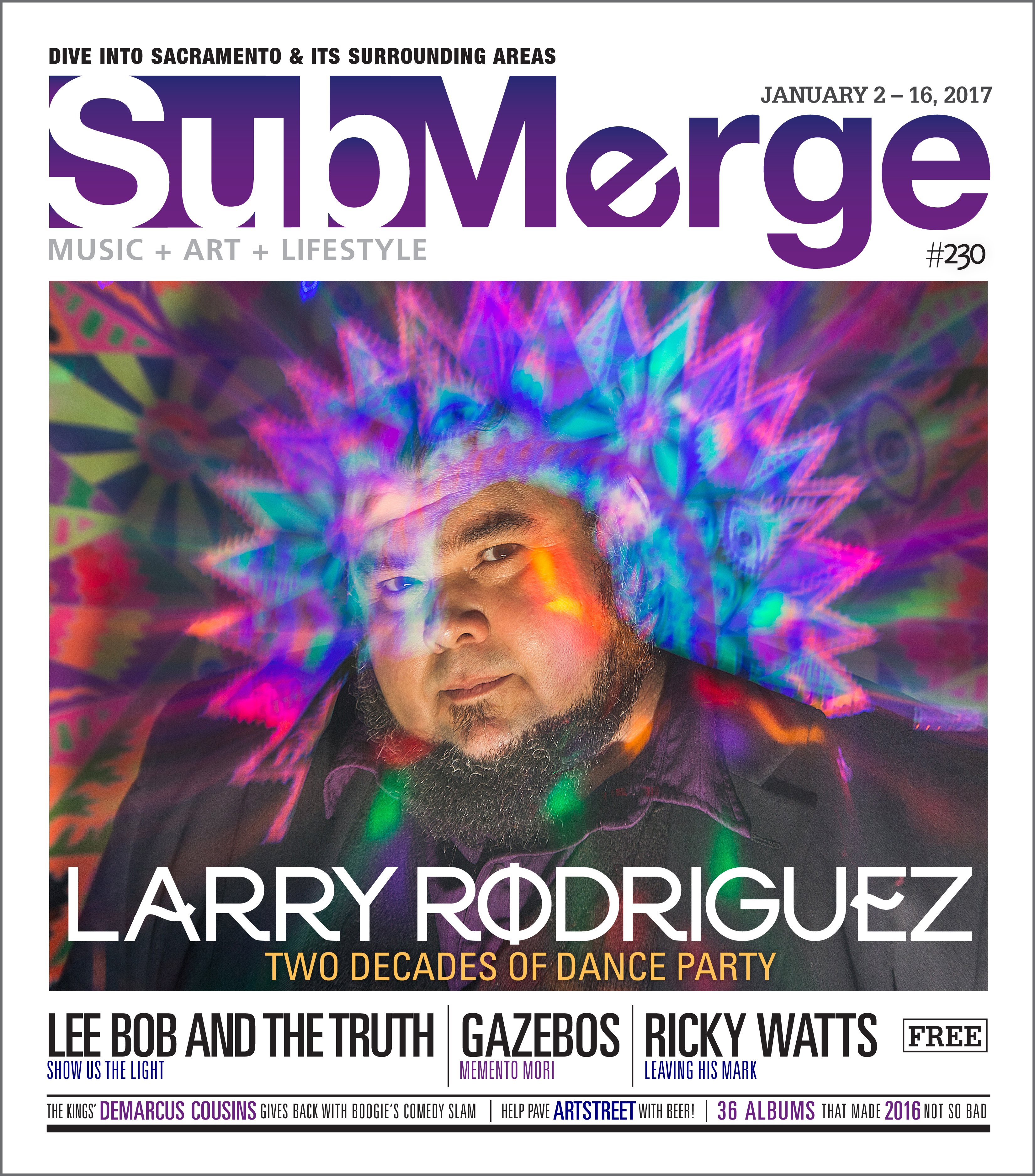
Ryan Sollom’s name might ring a bell. His former band Shortie had quite an impact on the 2000s music scene in Sacramento, and at the time it seemed whether someone liked them or not, everyone had an opinion on the matter. Sollom was much of what made their sound unique, and his talent was evident.
However, in 2006, the group abruptly parted ways, with some members going on to the project Will Haven, while Sollom continued on his own path, first with the band One Dying Secret, and most recently in 2014 with Surviving the Era.
Surviving the Era is due to release their second album, Parallax, the follow-up to their self-titled debut, on June 18. The album, recorded at Little Russia Recordings with Dryw Owens behind the controls, includes the recently dropped first single, with subsequent video, “Queen of the Sea.” Other than Sollom, the group currently consists of Kyle Newton and Kevin Cortez on guitars, Seth Borges on bass and vocals and Jake Cooley on the drums.
When discussing the transition from their self-titled debut to the upcoming release during a phone interview with Submerge, Sollom regarded the prior release as not really being representative of the band as they exist now. “The self-titled [album] … really the first five or six songs, the first batch we ever wrote,” said Sollom. “As we were recording it, we were writing other songs.”
“Pretty much the day it came out it was outdated,” he continued. “We were coming into our own. Our identity was already changing by the time that EP was back and we were putting it out. It was hard to push on people because it wasn’t who we are … It was who we were the first couple of months as a band. Our identity naturally changed. We knew what we wanted to be as far as style of music we wanted to portray and what we wanted as individuals, so [Parallax] is an exact representation of Surviving the Era.”
When listening to the various tracks that make up Parallax, it’s not difficult to find both similarities and differences between the style of Surviving the Era and Sollom’s prior work. His vocals and the recording are far more polished, while the music that backs his vocals has softened a bit, giving off more of an early 2000s emo/power pop feel than the more pop-punk vibes featured in many Shortie tracks. At the same time, Surviving the Era’s tracks are still drenched in guitar-driven goodness, and there are definitely tracks from the old days that line up with Sollom’s most recent work. A good example is “Queen of the Sea,” which would pair nicely with Shortie’s “Every Single Word” off of their 2005 album, Without a Promise.
“I think that naturally with life you change, you adapt. I think Surviving the Era, as individuals, have grown and changed. Circumstances around my life has changed too. The writing has changed. As an older person I can not shun any happy feelings, where when I was younger I was like, ‘Oh, this is happy … I don’t want to write about that,’ where now I’m like it’s a happy-vibing song and happy things come up when I’m writing lyrics, I’ll embrace that. Of course, yeah, things have changed, life has changed, writing songs have changed a little bit, but as far as inputs go for myself, I’ve always been influenced by the same stuff. That’s who I am.”
Prior to Surviving the Era, Sollom was in a project called One Dying Secret, which ended in 2013. He had actually left Shortie to join the band, and while he is no longer involved in the project, they did make it a healthy seven years of existence, which in band years is almost an eternity. Unfortunately, the group tasted minor success, but in the end Sollom was only left wanting more.
“We released one EP officially, put one EP out for free and we ended up going out to Los Angeles and recording, doing some demoing for John Feldmann [Goldfinger, producer for Panic! at the Disco, Atreyu, The Used], and we ended up doing two songs and putting those out for free as well. That was in hopes of landing something for John Feldmann on his record deal, and that went really well. Then, things just kind of fell apart after we got back from Los Angeles. The people in that band just kind of ‘lost their fire,’ if you will.”
If you track the timeline of Sollom’s various projects, from Shortie to the present, you will only find one year where he is not officially in one of the three projects previously mentioned. When it comes to music, this really isn’t an alternative option: “If I found myself not being involved with music, I felt off-kilter,” says Sollom. “I’ve always been involved with something, as an individual I have to be. It’s everything to me.”
When asked whether or not he has ever considered working apart from a group atmosphere, Sollom says he prefers the company of others. “I don’t have enough balls to [work as a solo artist], I don’t think. I love creating with other individuals, because of the aspect of what they bring. I have nothing against the Justin Timberlakes or something like that, but I like creating with people, because that’s how things blossom and take different shapes. You can have an idea and work with someone else and that thing will change to something even better. It keeps things fresh, you get different perspectives. I love creating with other people, it’s just a much better fit for myself.”
Sollom has spent his entire life in Sacramento, with all three of his projects performing a majority of shows in the area. While this does not make him an expert on the local music scene, he definitely has perspective on the subject. When asked about the state of the scene, Sollom echoed other musicians in the area that have recently felt frustrated with the current environment.
“I feel the [Sacramento music] scene is really bad right now,” said Sollom. “A decade ago it was thriving … there was lots of all-ages clubs, lots of bands that would play together and help each other out. I think it was a much more vibrant scene. Now, with how things are ran, from local bands having to sell tickets to draw people to shows … that sucks. People should be able to make up their minds if they don’t want to see you day of [the show]. They shouldn’t have to commit in advance. It’s been ridiculous, and a lot of bands feel that way. So, I think that has hurt the scene. I think the lack of clubs, the lack of all-ages venues hurts the scene. It seems like there’s not a whole lot of bands … I mean, there’s a fair amount of bands, but compared to what it was back in its heyday, it’s definitely a dying scene.”
“I love Sacramento … born and raised,” Sollom continued. “I think even if there was a level of success with Surviving the Era, I still probably would want to live here. I love the fact that Sacramento is not far from the Bay, not far from the mountains … It’s always good weather. The city itself, we have an arena coming in, and that brings possibilities for new music stuff. I love it. I’m a loyal guy.”
The band, due to drop their new album, will continue to develop their live sound as they work toward a full-length album, which Sollom said he would like to do in the coming year. In the years they have been active, they have been quite active in the live scene, essentially playing any place that will take them.
“Last year we played over 100 shows,” said Sollom. “There’s a lot of bands I know that won’t play unless it’s a big show, and that is totally not our motto. We play everywhere and anywhere because we want the experience. We’re trying to build our show ourselves and get as good as we can. There’s no show not good enough or too small. No house shows yet. We would play a house show in a heartbeat. I love house shows. It’s cool because it’s so not formal. We’re down to play, send us a message if you want us to play your house show.”
Parallax will be released on June 18, and you’ll be able to celebrate with the band when they play live that very day as part of a stacked lineup at this year’s First Festival. The mammoth two-day music festival runs from noon to 10 p.m. at Southside Park in downtown Sacramento on June 18 and 19, 2016. Just a few of the other bands performing will be Epsilona, Death of Reason, Sun Valley Gun Club, Tell the Wolves and Drop Dead Red. To purchase tickets in advance, go to Firstfestivalsacramento.com, and to learn more about Surviving the Era, go to Survivingtheera.com.
Magic Man
When your uncle is a professional magician and bestows upon you his magic kit after hanging up his top hat, it’s only natural that your first gig as a performer involves magic. For the quintessential Sacramento musician, Anton Barbeau, this is exactly how he first landed on the stage and caught the performance bug.
“My first performance, my first gig, was doing magic in school—I was 10 or something like that. As a magician I was probably reasonably mediocre but I loved performing, so that was my beginning as a performer was doing magic,” he chuckles.
While Barbeau didn’t take his magic act to Las Vegas, his need to create magic never abated. Instead, the artist plunged headfirst into the local musical pond and has been swimming there ever since. To say that the singer, songwriter and multi-instrumentalist’s work is prolific would be a gross understatement. Come on, the guy has put out more than 20 recordings in the last 20 years—some years putting out as many as three albums during a single trip around the sun. But his latest musical effort might just prove to the world that his work is truly magical.
Collaborating via the Internet and email, artists from across the globe contributed to the musical process of creating Magic Act without setting foot into the studio with Barbeau. The process was one in which Barbeau himself didn’t necessarily think would pan out into musical gold, but the end results even surprised him.
“Tracks were coming in from Italy and Spain and all over the world. It’s kind of exciting because it all fit together—it does work, which surprises me,” he explains. “I always like the feeling of having a band or people that you’re in the same room with and there’s the chemistry but in this case some of the chemistry seemed to happen from around the globe, electronically and it still fits.”
As a born-and-bred Sacramento artist, Barbeau’s local roots are deep—as the prodigal son of the local music scene his artistic presence still resonates. And while he calls Berlin home now, he makes a concerted effort to return to those roots, often finding himself back in his room at his father’s house toying around with new ideas on his old drum kit and other instruments laying around before heading out to reconnect with friends, family and old bandmates.
“It’s funny because I’ve been back recently, and so I’m hoping the prodigal son shtick still works. I’ve got a really good band in Sacramento and it’s really fun playing with these guys,” he says. “To be playing songs off of the new record will be good—I do feel appreciated when I’m back, in California in general, it’s nice to come home. There are people who know my catalog, there are people who know songs of mine from 10,000 years ago. There’s something gratifying in that.”
Currently, the magician-turned-musician is gearing up to make his way back home with his bag of tricks in tow to play once again for the hometown crowd with a smattering of performances throughout the area with gigs at Luna’s Café and Fox and Goose, but it’s the record release party at Shine on March 12 to celebrate Magic Act that Barbeau is really looking forward to.
“I think the songs are sort of a typical range from me, there’s a handful of the three-minute pop songs with catchy choruses but there’s also sort of a murky, psychedelic middle [section] and I feel it’s a very genuine record for me,” he explains.
The record—much like the artists who collaborated on it from all over the globe—is a collection of songs and ideas that coalesced magically. Some of the pieces of music that landed on the album started out as tracks for other records and some were just sitting on the shelf, collecting dust in Barbeau’s seemingly infinite catalogue of music.
“I’ve made a lot of records and it’s easy, it’s what I do. So with this one, it feels like the songs picked themselves, they chose to be together,” he explains. “It feels like they belong with the rest of the songs. It’s not often that I make albums where I feel like the album itself tells me what to do. When that happens there’s something magical about that which is nice considering it’s called Magic Act.”
Certainly Barbeau’s long-spanning career is proof of his incredible drive and devotion to making music. He’s been making music longer than most of the hottest local bands have been jamming. His music is a powerful mix of pop and psychedelic but it also takes cues from The Beatles and David Bowie. Sure, he’s been bestowed with considerable praise from establishments like the BBC and Spin magazine, and is pretty much beloved by everyone when he comes home to play shows. But even a celebrated artist can appreciate those special moments where the process of making music is truly transcendent.
“Most of the people on this album are people who I’ve worked with before … but a few people [aren’t], like Colin Moulding from XTC. You know, XTC are huge, huge heroes of mine,” he gushes. “To work with Colin was a really thrilling moment—and again that’s a kind of magic, to work with one’s heroes.”
For Barbeau it really is all about the work. From his sanctuary in Berlin, where he spends the majority of his time dreaming up new material, to the frenetic and inspiring energy of the streets and canals that litter the cultural and artistic center of Germany, the mercurial musician is always at work. It’s the only thing he knows how to do, he admits.
“When it really works on another level for me is when things sort of spring out of nowhere or somewhere where you can’t see,” Barbeau says. “I think with this record it feels like that happens a lot, everything feels really inspired even when tracks were sent across the globe through email everything fit. One musician is responding to another musician’s performance, even if they aren’t playing in the same room at the same time—and that’s magic.”
Celebrate the release of Anton Barbeau’s latest album Magic Act March 12, 2016 at Shine, located at 1400 E Street in Sacramento. Barbeau and his band will be joined by Corner Laughers for this all-ages show. $7 cover, 8 p.m. show. If you can’t wait that long, you can catch Barbeau Feb. 27, 2016 at the Fox and Goose (1001 R Street) with Blame the Bishop and The Bobbleheads at 9 p.m. Cover for this 21-and-over show is $5. For more info, check out AntonBarbeau.com
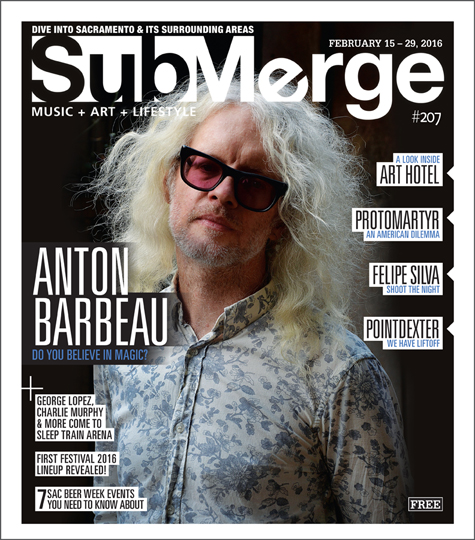
Weird by Design
If I ever needed to hire a hype group, Tell the Wolves can take all my money. The Sacramento five-piece is as energetic and bright as a crackling fire in rock ‘n’ roll hell.
Offstage, the band is full of welcoming, positive and joyous dudes. Onstage, however, they turn awesomely erratic and sonically chaotic. I sat with vocalist/guitarist Leryan Burrey and bassist Zack Davis to talk about the release of their upcoming EP The Great Design, and how they manage to balance being the extremely optimistic, super nice guys making music that delivers a riveting middle finger.
Tell the Wolves has been together since 2013, and has only added members in their few years of being a band. The band’s name comes from multiple instances of wolves popping up in their lives. The main one being when Davis came across the book Tell the Wolves I’m Home (by Carol Rifka Brunt), and was struck by the ring of it. He went to his bandmates, who had been knocking around band names for quite some time, and presented them with his band-name epiphany, “Tell the Wolves.” Destiny was manifested that day, and the rest is history.
Burrey and Davis first met at Harlow’s, where coincidentally, they will have their first EP release show with their band. “The details are a little murky,” Burrey admits. “We had both had a bit to drink that night.”
At this point in the conversation, they both go back and forth in trying to piece together what happened that night, and how it led to their partnership. The conclusion was: “Essentially, it was a labor of love brought together in a drunken blur.”
Both guys have been long-time musicians in Sacramento, and attribute their accomplishments to local networking. “We wouldn’t have been able to accomplish anything. Not Concerts in the Park last year, not any of it,” Davis said. “The Sacramento music community is so supportive and they all like and share our stuff. It has all been a very supported ride.”
The first show the band ever played together was also at Harlow’s, where they played for pretty much just bartenders and girlfriends, “The place was completely dead,” Burrey reminisced. This time, for their EP release show at that same venue on Feb. 6, 2016 things are already turning out much better.
“We have already been selling some tickets, so we are stoked to have the support this time around,” Burrey said.
Zack added that, “Harlow’s and Old I are some of our favorite places to play. Last time we played at Old I, though, we were physically too big for the stage. It’s a bummer because it is our very favorite dive bar. It has such a super awesome atmosphere. And it has the scent of dive bar.”
Tell the Wolves has mastered the art of creating erratic rock ‘n’ roll with a soft spot. They like to emotionally vomit their heart out into song.
“I like bands that do weird things and are not afraid. I appreciate the fact that they take so many risks,” said Davis. “I like feel-good-for-you music that is creative and interesting, but still meaningful. My favorite bands, like Incubus, don’t just make art for art’s sake. They make art so that you feel something. On the other hand, I can honestly say that those guys can shit in a bucket and I would buy it.”
He continued,“You can think of your favorite musicians and pinpoint how their music makes you feel. That’s what it is all about. For example, Rage Against the Machine, who are one of my biggest influences, started out as a couple of young guys who sung about their frustrations with the system. Here we are 20 years later, and what they sang about sadly still matters and is relevant. They used their music as an honest platform, and they are absolutely timeless. Surrounding myself with music like this for years, has rubbed off on me and made want to create similar music experiences.”
Tell the Wolves says that their EP is a “Culmination of everything we have ever wanted to do. EVER.”
“We wanted to make some groundbreaking, beautiful, rock and roll,” said Burrey.
“We had already made all of this music, played all of these shows and had a bunch of fun making our music. This EP seemed to be the only thing missing, and it’s kind of being used to sum up the work that we have done in the past three years,” Davis continued.
“This EP took us a year and a half of fun, fighting, drinking, hangovers, deaths, crying, things we can’t even talk about,” Burrey said.
“And a couple of murders,” added Davis, “This is off the record, right?”

Photo by Phill Mamula
Davis’ overall experience with Tell the Wolves and his music can be summed up with a little help from Justin Timberlake. “We were so excited to write this music, and we are so excited to play it. We have such a good time goofing the fuck off,” he said. “It is so important for us not to take ourselves too seriously. Most of the time, our music is really emotional and serious, but when people see us live or get to know us, they will see that we aren’t like that. Music is our outlet for that. Justin Timberlake once said, ‘I don’t take myself too seriously, but I take what I do very seriously.’ We hope people hear how much we love to create music. I want them to feel our love and the passion that goes into it. The studio is our sanctuary, and it’s where we get to express all of those feelings that are all bundled up. We get to let loose with noise and share it with our audience. This is what music is all about for us.”
The whole album was recorded mostly every Sunday. Saturday night before recording would always turn into ridiculous nights of catastrophic drinking. “My girlfriend affectionately named the Den we would drink at ‘The Den of Bad Decisions.’ And so it was,” Burrey said. “All of the songs on the EP were created through the urgency to express ourselves through all of this craziness in our life. We would have these wild emotional journeys, like my issue with alcohol, that I was really able to deal with through making this EP.”
You can catch Davis and Burrey with the rest of the Tell the Wolves crew at Harlow’s Feb. 6, 2016 for the release of their very first EP, The Great Design. Also performing that night will be Some Fear None and Hero’s Last Mission. Doors open at 10 p.m. for a 10:30 show. Tickets can be purchased in advance through Harlows.com.
Open Letter
For as busy as his 2014 was, you’d think Richmond, California-based rapper Iamsu (stylized IamSu!) would be content to kick back and enjoy a little downtime. That’s most certainly not the case.
In fact, when Submerge spoke to the young, rising hip-hop star, he was gearing up for a flight halfway around the world to Australia to play his first-ever string of dates in the Land Down Under, hitting five cities.
“I’m really excited,” he said as we began our phone conversation. “I heard they love hip-hop over there.”
This year, Iamsu’s travels have taken him coast to coast and around the globe, with even a stop in Paris along the way.
“Man, it was amazing when I went to Paris,” Iamsu said of his Oct. 3, 2015 performance at the Be Street Festival. “It was a great experience. I can’t wait to go back. There was a lot of energy. They just appreciate rap music, hip-hop, in a different way. It was really cool.”
Iamsu’s recent bout of globetrotting has been in support of his most recent release, and his first studio album, Sincerely Yours, released in May 2014. The album features 15 seamlessly woven together tracks that are refreshingly sparse, with a laidback feel that’s perfectly suited to Iamsu’s Cali-cool cadence. It also boasts guest appearances from Wiz Khalifa, 2 Chainz and Bay Area stalwarts E-40 and Too $hort. Rolling Stone ranked the album among its “40 Best Rap Albums of 2014.”
Though Sincerely Yours was technically his debut, Iamsu has been releasing mixtapes at a torrid rate since 2010. Beginning with Su! the Right Thing, he has put forth nine mixtapes, including 2015’s Eyes on Me, which is available for digital download. Among those releases were Kilt and Kilt II, which will lend their name to Iamsu’s forthcoming sophomore studio album, Kilt 3, which he said should be ready “early next year.”
“The album, as far as music goes, is complete. I’m just in the process of … gathering all my media content, which is something I’m doing different,” Iamsu said of the anticipated release. “With the last album, I didn’t have all my videos done before I released it. I was doing stuff after the release date … I just wanted to get all my stuff done and give everything to the people all at one time.”
He said that continuing the Kilt series was meant to recapture some of the feelings he had earlier in his still young music career.
“It’s definitely an evolution from those two. It’s me revisiting that feeling that I had,” Iamsu said. “When I recorded those first two mixtapes, the mindset on the music, just on determination, was so high. That’s what I’m giving people on this Kilt 3 is just a lot energy. It’s more so about feeling my presence.”
Upon returning from Australia, Iamsu will hit the familiar roads of California, including a stop in Sacramento. In the meantime, you can learn more about this burgeoning Bay Area rap star in the following interview.
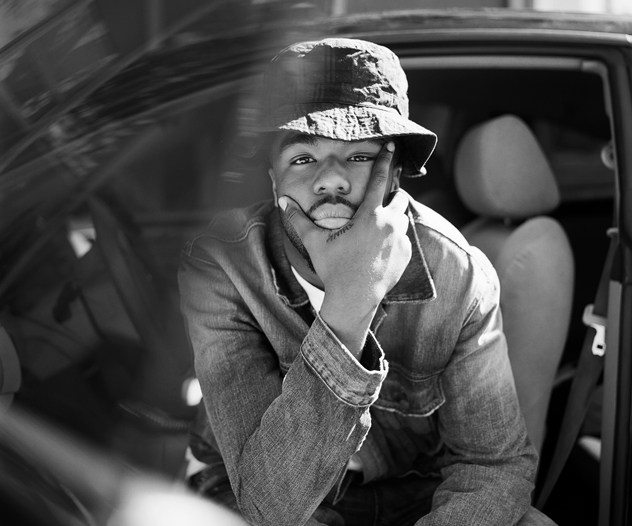
You’ve done a lot of touring this year. Are you looking forward to winding down a little bit or do you enjoy being out there on the road?
I’m definitely not looking forward to winding down [laughs]. I might go crazy …
Before you released your first proper studio album, you released a bunch of mixtapes since 2010. Are you one of those people who are constantly writing and working on ideas?
Absolutely. Every time I get a chance to get in a studio and work on ideas, I do. This is just my passion. Hopefully I can get in a studio in Australia and catch that vibe.
Have you been in contact with any artists or producers in Australia that you’d like to collaborate with?
Some people had hit us up about if we were looking for a studio, so I’m going to see if I can get in that studio.
Do you have material you’re working on, stuff that you’ve written, that you’re looking to record?
Nah, I’m more of an in-the-moment type of writer. Sometimes I’ll write stuff on my phone—just the beats or whatever—and record it later, but I’m more so in the moment.
You’d released a bunch of mixtapes before 2014, but Sincerely Yours was dubbed your debut album. How was recording that different from your experiences making mixtapes?
It wasn’t too different. I had a lot of freedom with that album. I did something more alternative with that project, because I was really trying to showcase my artistic capabilities, so that was really cool … It was a great time. It allowed me to do a lot of different things.
One of the things that struck me about Sincerely Yours, even through the intro and interludes, was how the tracks seemed to flow together so well. It felt like listening to one long song with a bunch of different movements. Was that something you really wanted to work on when you were putting it together? You’d said you were looking to make an artistic statement.
Definitely. I’ve got to give a lot of the credit to some of my boys who helped me put the album together Kuya Beats, P-Lo and Chief. They helped me put that album together, because I was on the road. I had an overall concept, but they were the ones who helped me put it together.
What was the overall concept you had for Sincerely Yours?
It was an open letter to my fans. I wanted to make it like an audio book—just free-form thoughts and me just communicating openly to my fans, because I was in an interesting headspace at the time. I really had to express that. I feel like I got that all off my chest.
I was really digging the title track. The lyrics seemed very open and honest. Could you talk a little bit about how that song came together?
That was just where my head was at at that exact moment. When I listen back to it, it puts a smile on my face, just because I see how much I’ve grown up since then … To be honest, I was afraid of success. I wasn’t afraid of failure, because I don’t believe I’ve come all this way to fail. I was afraid of all the things to come, like traveling overseas and going on TV, you know what I’m saying? Because all this stuff is destined, and I wasn’t really sure if I was prepared for it at the time.
Do you think you’re more prepared now?
Definitely, and that just comes from maturity. There are a lot of things that happened over the past year that have made me grow up, you know what I’m saying? My grandmother passed this year, my uncle passed this year, and that was really hard. That really made me face reality, you know?
You’ve gotten a lot of attention from some major media outlets like Rolling Stone and even the New York Times. Did that help contribute to your fear of success? You hear a lot of cautionary tales of people approaching stardom and they can’t handle it. Was that where you were coming from?
It was definitely both. A lot of cautionary tales. It just comes from maturity, man, I had to realize I’m not scared. I had to use that fear to propel myself and not hold myself back.
The Bay Area has such a rich hip-hop history with guys like E-40 and Too $hort, and you’ve gotten to work with both of them. Did they impart any wisdom on to you as far as having a long career in music and helping you mature as an artist and just as a professional?
Oh definitely. I had a few talks with E-40, and he gave me a lot of knowledge as far as taking my time with music, and Too $hort as well. They’ve had probably the longest running rap careers, so I’m in good company.
Do you feel any responsibility, being from the Bay, to carry that banner, so to speak, of being the new generation?
I’m just walking my own path, and I want to represent the Bay Area, period. I hope to take it as far as they took it. So yeah, I want to carry that torch.
Catch Iamsu live at Ace of Spades in Sacramento on Dec. 4, 2015. Show Banga and Anjali World will also perform. Tickets are $20 and can be purchased through Aceofspadessac.com.
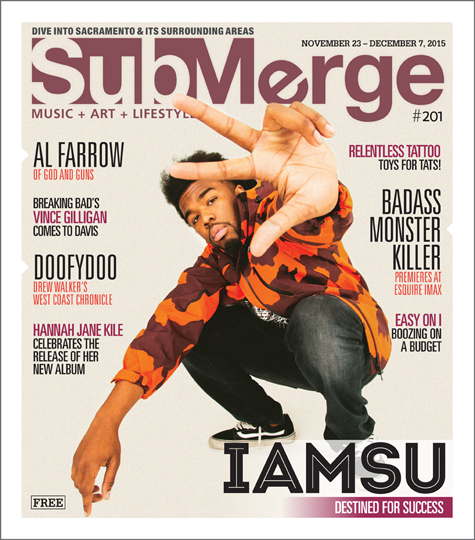
If You Like It, Go Deeper
It’s hard to know where to even start when it comes to Drew Walker.
When I first met Walker, he was an outgoing stoner (he’s proven it’s possible!) who would play guitar from the porch of his former Flop Haus digs on H Street and mercilessly push you to support local music and have fun doing it. From there, I remember always seeing him sitting behind a drumset with a handful of local bands or involved in the production of a local show in one way or another. Other times, he would be walking around the city for hours, posting fliers for shows, snapping film photos and stopping at what seemed like every other house to catch up with friends.
A few years have passed, and lots of things in this town have changed. However, it is comforting to see Walker as one who remains consistently motivated when it comes to his craft and his commitment to the Sacramento music scene. And just as when I first met him, Walker still has that seemingly never-ending desire to create.
Fresh off tour with his band, Gentleman Surfer, Walker has rolled out his current labor of love through his solo project, DoofyDoo. This current endeavor is a collection of 15 EPs of edited live recordings that pay homage to every city he has toured in over the past year. He has called this collection of recordings, “The Tourist: The West Coast In Audio”, which he describes as an album, “Spanning both Western borders, part beats, part guitars, part anthropological adventure, a collection of tracks from, for, and about 17 different cities and towns between Tijuana and Vancouver.” He says that the album was made, “Using tapes, samples, fx and found instruments. Each track on the album represents a unique unrepeatable experience in the city it was recorded in including Sacramento, Davis, San Francisco, Reno, Oakland, Santa Barbara, San Diego, Mexicali, Tijuana, Long Beach, Portland, Olympia, Seattle, Anacortes, Eugene, Port Townsend and Vancouver.”
The Tourist is a long, freaky musical trip. There is song after song of looping soundbites and melodic story lines that almost play like subliminal messages. Drew did hours of research on each place he visited, and collected sound snippets from different sources, using them as grounds for improvising in live performances. He then recorded and edited the raw performances and turned them into albums. This process continued over the course of a year, blossoming into a glimpse of the hyper world of Drew’s brain.
“My desire to go on tour, meet new people, and travel really left me with the idea that I wanted to know the people and places on a more personal level,” says Walker. “I would go up on stage with a semi-planned idea of what I would be performing, but it was all with the idea that it would all organically unfold onstage.” In other words, he would reach out to his surroundings for creative motivation.
Each song is accompanied by writings and pictures. “I like to capture the snapshot of an experience,” says Walker, “Every song incorporates a different experience.”
Every EP was recorded in a different venue in a different place and with a completely different audience, and there are even instances where Drew has used the equipment of other acts. “Sometimes I’ll ask other bands playing the same gig if I can use their instruments. It’s what gives it that nice tweak or something different. So a lot of the songs even use entirely different equipment.” All factors have helped create something aesthetically different every single time. In the end, a total of 18 varying live shows were edited to create The Tourist.
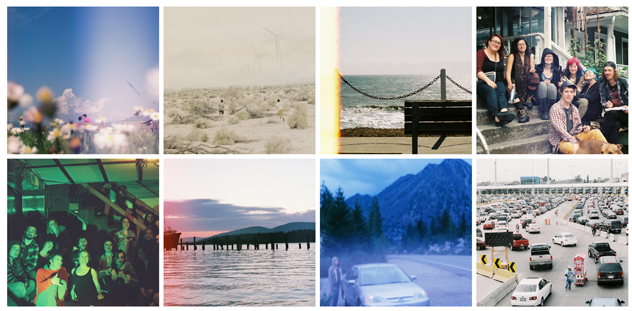
“This work definitely takes a third eye to take in,” says Drew, “In fact, I hope some people are high when they first listen.” He gave me permission to oust his reefer influences, saying, “One of those songs is titled ‘4/20/2015’ and was recorded in San Francisco at this crazy bar that was also a performance venue and laundromat. That was crazy, but also one of my favorites.”
Walker sees this project as a huge artistic piece that couples many concepts that go beyond the musical. Every song has photographs, writings and art he has personally created specifically for each album and its tracks.
“It is a huge piece of performance art in my eyes,” he says, “Essentially the collaging of images from my life on tour. Its takes on a personal and unique form with each performance.”
The tracks take the listener on a sonically animated roller coaster ride, with little to no actual singing. Most vocals are limited to sound snippets and people talking about stuff like racism, parking tickets, Sac history and Birkenstocks. A lot of these sounds are rhythmically repeated and paired with Walker’s live drumming and other instrumentals. One notable thing about Walker’s style, is that he has managed to master the art of being spontaneous and free. It genuinely feels like his unedited subconscious unapologetically seeps through in every song. It is wacky and weird and sometimes dizzying, but it is never boring or trying to imitate anything else. The Tourist feels personal and authentic without any pretentious connotations.
On Dec. 6, 2015 The Tourist will officially be released in its entirety at the renewed Blackbird Kitchen + Beer Gallery. In fact, the recently renovated (re-re-renovated?) venue is opening its digs early just for Walker’s show. Since the community raised over $800 through Indiegogo to help make Drew’s touring project possible, Blackbird is hosting a dinner as a thanks for everyone before the show.
This reception will be something entirely new for Walker and his music. Rather than being planned and rehearsed, Walker hopes to follow suit with The Tourist, and let things unfold organically. There will be a gallery reception, with a music video premier that he is really excited about. “The music video is made to go with the Sac song,” he says, “It’s going to be 12 awesome minutes directed by my friend Gabe, aka Tiger’s Blood.” A live performance will follow, that will surely be wildly improvised; something that will be utilized to make another improvised album that was based on his previous improvised albums.
When asked about his motivation for this work, Walker says, “If you like it, go deeper. It’s an experience that involves all of these people and all of this information and it’s all part of it here. It’s not about just music, but it is verging on fine art/outsider art. Essentially, my show will be about sharing, celebrating and then moving on to something else.”
Grab your copy of DoofyDoo’s The Tourist Dec. 6, 2015, at Blackbird Kitchen + Beer Gallery at 1015 9th Street in Sacramento. The all-ages show will include a live performance, video premiere and gallery reception and is free with purchase of the album. For more info, go to Facebook.com/doofydoojams
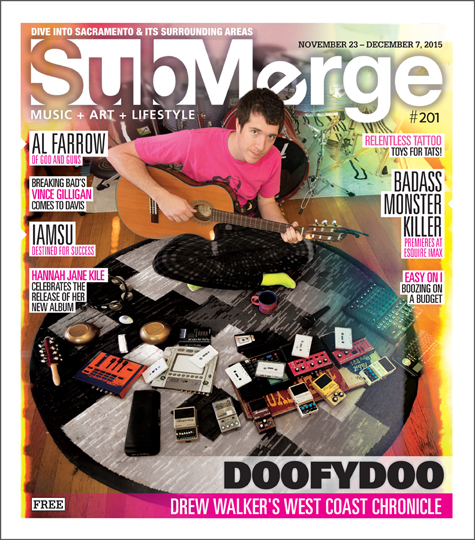
There and Back Again
In the new video for the song “Test Yourself” off Sea of Bees’ latest musical effort, Build a Boat to the Sun—a 10-song voyage through the band’s singer-songwriter Julie Ann Baenziger reconnection with music after a brief hiatus—Baenziger and her musical cohort Amber Padgett channel their inner Girl Scouts and commune with nature in a playful romp with the snails and butterflies that inhabit a wooded glen nestled against the craggy cliffs lining a frothy, churning sea.
The video, shot by Padgett and fellow local creative Jyoti Alexander along the breezy trails and parks in Stinson Beach, channels that feeling of wide-eyed innocence that permeates much of the Bees’ musical catalogue and marks Baenziger’s return—not only to the 916 but to creating new music.
Coming off the heels of a successful musical residency at the Ace Hotel in New York, Baenziger is diving back into her Sacramento roots, heralded by a return to the stage in a homecoming of sorts with shows lined up this month at the Warehouse Artist Lofts and Sophia’s Thai Kitchen in the continuation of the musical journey that began as a teenager.
“When I was younger, about 15 or 16, that’s when I realized I could create things,” she explains. “I was existing to create things, I liked to draw a lot, but I was really introverted.”
It wasn’t until she stumbled across a musical duo at church and became transfixed by the lure of music that she began to emerge from her shell. It was then that her creative yearnings metamorphosed from pictures into harmonies.
“There was a boy and a girl; a sister and a brother, and they were playing guitar and singing,” she explains. “And I was just taken away by them [and thought] I could maybe do something like that. So that was kind of like an invitation. Also I was crushing on the gal a bunch.”
Following that transformative moment, Baenziger spent the remainder of her teenage years secreted away at home, teaching herself how to sing and play the one-stringed bass guitar that one of her brothers had cast away into the dark recesses of the family’s shed. Certainly, the road to tours along the West Coast, shows in the United Kingdom and residencies in some of New York’s top venues—she also played a stint at the Living Room in the Williamsburg neighborhood of Brooklyn—didn’t come without its frustrations and long, grueling hours of learning how to master the intricacies of the bass.
“I’d pick [it] up in the mornings before I’d go to school and try to tune it. I didn’t know how to tune it so I’d just turn on some music and try I’d to emulate that and try to make the same sound,” she says. “So I was really trying, it took five years of misery—my fingers were callused, I didn’t know how to tune, but then it became just my life.”
If turning heartbreak and adversity into musical gold was a commodity, then Baenziger has cornered the market on making melodious magic from the treasure trove of instruments she continues to master as a self-taught musician. Now in her sixth year of fronting the Bees—a sometimes one-woman act that moonlights as a duo or full-fledged band—the songstress says that her music’s evolution isn’t an act of premeditation, but is rather a reflection of her experiences.
Sea of Bees’ first album, Songs for the Ravens, what Baenziger calls an explosion of delving into the pent-up emotions of feeling limited and restrained, was a way for the artist to discover the joys of the self. The second album, Orangefarben, was a much more personal piece of work and a catharsis of sorts. The album follows a time of turmoil, during which Baenziger came out, went on her first tour to promote her debut offering and ended a relationship with her first girlfriend.
“The second record was more of the experience of a break up. It was just very direct and in the place where I was at I was limited—I couldn’t explore, my feelings were walled up,” she admits.
With the release of Build a Boat to the Sun, which she recorded under the guidance of her longtime manager John Baccigaluppi at his new recording studio, General Produce in Sacramento and Panoramic Studios in Stinson Beach, she says she’s learning how to explore again, where there are no restraints—both in her life and in the way she approaches her music.
“It’s crazy, now I feel like I’m back. Not back to the beginning, but back to this place of like no limits, which is nice,” she says. “There’s no emotional limits, there’s nothing that can stop what I want to try, whether it be some Afro beat, or just anything, I can do Indian chants, it’s limitless, so it’s very refreshing to see what happens.”
As the songbird prepares to bring Sea of Bee’s back to the home stage, it’s clear that the “Test Yourself” video is truly a reflection of her eagerness to delve back into the waters of creating harmonies that convey her desire to wash away the limitations of her former selves. With every “la la la,” her voice soars with the confidence of her enthusiasm to create. But, for now, she’s looking forward to reconnecting with old friends and revisiting older tunes that she is ready to tap into again—and don’t be surprised if she throws in a few surprises too. She isn’t ashamed to admit an affinity for the musical stylings of pop royalty Katy Perry.
“Amber and I were talking about the upcoming shows. We’re going to keep it really lo-fi for the Sacto show, that’s going to be a super fun show, though,” Baenziger explains. “I think we want to do more of the older songs because I’ve strayed away from them for so long. I have to get to that place where I just enjoy playing them. Sometimes you’ve got to go back and revisit them and just kind of connect again and enjoy the process.”
As for the Davis show, Baenziger says that’s when she’ll pull the big guns out and employ the talents of a full band. Her excitement resonates throughout the coffeehouse where she reflectively sips on her caffeinated beverage of choice—a steaming cup of coffee.
“We’re going to have some good friends play with us,” she says. “Be expecting a big fat hug of music. Be prepared to be embraced by the sound.”
With just a few shows planned, Baenziger says that with the fall equinox she too is looking forward to a fresh start musically and personally. She calls it a rebirth of sorts and reconnecting with old friends has been a large part of her inspiration as she embarks on new musical exploits.
She is currently working on her fourth album, which she hopes to wrap up in December and release in the spring of 2016 and is embracing the feeling of her current mantra of casting away any limitations, of being limitless and finding happiness back among her friends and fellow musicians.
“You’ve got to feel good. I don’t want to feel shitty anymore, I’m so tired of it,” she says. “Everybody deserves to feel good and I’m excited for the future of things. I have been actually excited about making music. No limits that’s my thing.”
Give Julie Ann a warm welcome home at two upcoming shows: The first at Sophia’s Thai Kitchen in Davis on Oct. 22 (tickets are $8 in advance and the show starts at 9:30 p.m.), and the second is a special rooftop show at the WAL (1108 R Street in Sacramento) on Oct. 23 at 7 p.m. with Sunmonks and Jacob Golden.
The Melting Pot
Gathered at the Hideaway Bar and Grill in Sacramento, Rick Meagher (vocals, rhythm guitar) Adrian Baxmeyer (bass guitar) and St. John Fraser (violin) of One Eyed Reilly were eager to discuss their new record. During our conversation the band opened up about their songwriting process, and how they turned an unfortunate accident into a strong musical bond.
Before the lads bellied up to the table to start the interview, they huddled around the jukebox creating a musical backdrop of punk rock by playing the Ramones, Against Me!, Rancid and The Clash. Once the mood was set, the band settled into their seats with a freshly poured round of Guinness—like any Celtic band should.
Rambunctious Celtic songs about Ireland and alcohol is where most people start when describing One Eyed Reilly’s debut album Hoist Your Glass. Though that description still holds true when it comes to the band’s newest album Barstools and Gravestones, the group’s musical growth is evident on their sophomore release, which ventures into Americana, country and even a little punk.
One Eyed Reilly’s growth and diversity has spilled over from the recording studio to the band’s live shows. “We’re definitely going to be bringing hard hitting country as much as we possibly can,” Baxmeyer said when asked how the band was going to approach their upcoming show with outlaw country artist Bob Wayne.
With their first album and a few years under their belt, the band was comfortable with expanding their sound, “We felt like [Hoist Your Glass] had to establish our Celtic credibility. As a songwriter I felt like every song had to be Celtic,” said Rick Meagher when comparing One Eyed Reilly’s albums. “On [Barstools and Gravestones] we didn’t feel as constrained because we had gotten our foot in the door and already established ourselves. With that being said there’s certainly plenty of Irish revelry on the second one as well.”
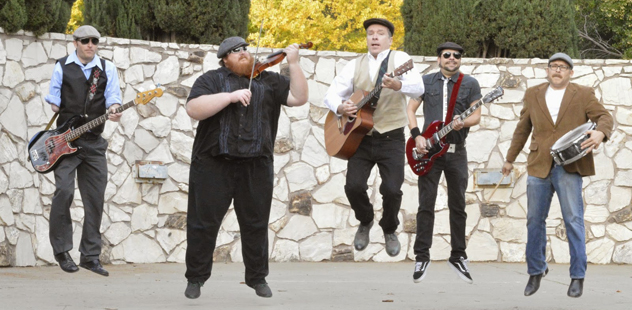
How do you feel you guys have grown in the last few years?
St. John Fraser: When the band was created, the premise was for everyone to have an equal part. All of our influences need to be heard in the band in some way or form. So we had a starting point, but as we’ve been playing together it has evolved. I think musically and certainly lyrically, it’s been a progression, not because it’s a choice, but because we are getting so much more accustomed to working with each other.
I have noticed a lot of historical references in your lyrics. Does your writing stem from personal experience or historical events?
Rick Meagher: Both. When I joined One Eyed Reilly I had also by coincidence gone to Ireland for a three-week trip. Having the experience of being in all of the pubs over there, and going to Dublin where the general post office was—where the Easter Rising in 1916 started—and seeing that they still haven’t repaired the bullet holes in the walls of the building. The reverence they have for that event and the fact that they haven’t fixed the bullet holes struck me. So that led to the opening line of the title track to our first album Hoist Your Glass.
Adrian, I heard that you were more of an athlete when you were younger, but through unfortunate circumstances [Adrian lost his right arm in a motorcycle accident] you found yourself turning to music.
Adrian Baxmeyer: I have always enjoyed listening to it but I never jumped into playing music. Losing the arm helped because I couldn’t play basketball and baseball like I used to and it was frustrating. So I decided to try music. There was kind of a learning curve to do it one-handed, then once I got that, I’ve only known how to do it one-handed.
Why did you choose an instrument that traditionally requires both hands to play, as opposed to the trumpet or another instrument that requires one hand?
AB: The trumpet was my first idea but then I was chatting with my dad and said, “You know I see Victor Wooten doing a lot of hammer-ons when he plays in addition to plucking and stuff,” and I was like, “Couldn’t I just do hammer-ons for everything?” At first I had a lot of fret buzz and a lot of string noise because I couldn’t dampen with the right hand, but as time went on I just learned how to do it with other fingers on my left hand.
St. John, why did you choose to play the Ramones on the jukebox?
SF: I grew up in a classical household and it was very structured. I was really only allowed to listen to classical music. My first concerts were all classical. I saw opera before I ever saw a rock concert, so as I started becoming a teenager and finding music—other than classical—I started stashing it in various places of my room. I listened to anything that was “stick it to the system.” I think it’s one of the reasons I’ve always had an affection toward punk in general. But yeah, there’s just something about the Ramones sound. Coming from a very orchestrated, technical world there’s something about the simplicity of it that delivered its message without messing around, it spoke to me.
RM: [St. John] always said [his dad] made him practice six hours a day, and it had to be six good hours or he would say, “two more.” When he got to be an adult he was burnt out and gave the violin up for 17 years.
How did it feel to start playing the violin again after 17 years?
SF: When I was young I was winning state competitions. I was being groomed to be a soloist. When you’re young it was a cool thing to a certain extent, but what I realized was that I was creating a distance. The unrelenting competition is just not who I am. But I realized part of me was missing. I love music and I realized that to a certain extent I was broken. There was a significant piece of me missing, and here I had a friend who was going through the struggles of learning an instrument.
AB: Actually when we first started out, [St. John] wouldn’t play the fiddle, he wouldn’t play the violin. He would only play the mandolin because it’s strung the same. When we really decided to be serious about this band I was like, “Let’s do this, but you have to play fiddle!”
SF: Yeah, Adrian was the inspiration for me to start playing music again. Music is such a wonderful thing and I hate the competitive side of music, but I love the collaborative side of music. I love sitting down and making music with Adrian because he is going to approach music uniquely. He’s going to approach it based off of his life experiences.
I noticed you guys have a diverse catalog of covers including songs like “Devil Went Down to Georgia.” How do you decide what you’re going to play live?
RM: Part of it is just responding to audiences. When we do “Devil Went Down to Georgia” people love it. It doesn’t matter if we’re playing Irish Night on the Delta King, they still love it. We’ll throw Wilco songs in there, we’ll play other Americana songs that people dig. Depending on the venue, depending on the event, or the occasion we’ll change it up.
You guys can get a little heavy at times too…
RM: We love punk elements, even in our original songs like “Higher Hand,” the second half definitely has punk aspects to it.
SF: That touches back to what we were talking about earlier. Everyone in the band is bringing in part of their influence and so it’s probably the best decision we’ve ever made to not pigeonhole ourselves into a specific sound. We’re always going to have our Celtic roots because we love them, but it’s fun to broaden our horizon to include Americana and folk and even country elements.
For more info on One Eyed Reilly visit 1eyedreilly.com. See them live at the Celtic Festival at the Nevada County Fairgrounds on Saturday, Oct. 3, 2015. The Celtic Festival runs Oct. 2-4. Tickets can be purchased through Kvmrcelticfestival.org.
Two hip-hop heads are better than one. That’s how the old saying goes, right? Well, such is the case when two local MCs, Mahtie Bush and Kham Raw, joined forces recently for a hot new EP titled No Days Off. Bush and Raw are at their best on No Days Off; they’re both lyrical beasts having cut their teeth in the local scene for years. And by partnering with producers/beatmakers Flawless Trackz, DaSoulOLife and ADOTHEGOD, the new duo has made a super solid five-track debut. Of course, what’s the point of dropping a new release without throwing a party to celebrate? That’s just what Bush and Raw are doing! Head to Blue Lamp this Friday, Sept. 4 to see the two bring the house down along with special guests Kel C’z (of Alumni), Jauwon Pierre and DJ Lahn. The doors open at 10 p.m. for this 21-and-over hip-hop extravaganza that will only set you back $10 at the door. Blue Lamp is located at 1400 Alhambra Boulevard in downtown Sacramento. For more info on this show and future events, visit Bluelampsacramento.com. No Days Off will be available for download via iTunes on Sept. 4. -JC

